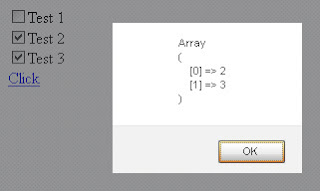
Controller
application\controllers\welcome.php
<?php
class Welcome extends CI_Controller {
public function index()
{
//Form Validation
$this->load->helper(array('form', 'url'));
$this->load->library('form_validation');
$this->form_validation->set_rules('username', 'Username', 'required');
$this->form_validation->set_rules('password', 'Password', 'required');
$this->form_validation->set_rules('passconf', 'Password Confirmation', 'required');
$this->form_validation->set_rules('email', 'Email', 'required');
//Validation Functions
//$this->form_validation->set_rules('username', 'Username', 'required|min_length[5]|max_length[12]|is_unique[users.username]');
//$this->form_validation->set_rules('password', 'Password', 'required|matches[passconf]');
//$this->form_validation->set_rules('passconf', 'Password Confirmation', 'required');
//$this->form_validation->set_rules('email', 'Email', 'required|valid_email|is_unique[users.email]');
if ($this->form_validation->run() == FALSE)
{
$this->load->view('welcome_message');
}
else
{
$this->load->view('formsuccess');
}
}
}
application\views\welcome_message.php
<?php echo validation_errors(); ?>
<?php echo form_open('welcome'); ?>
<h5>Username</h5>
<input type="text" name="username" value="<?php echo set_value('username'); ?>" size="50" />
<h5>Password</h5>
<input type="text" name="password" value="<?php echo set_value('password'); ?>" size="50" />
<h5>Password Confirm</h5>
<input type="text" name="passconf" value="<?php echo set_value('passconf'); ?>" size="50" />
<h5>Email Address</h5>
<input type="text" name="email" value="<?php echo set_value('email'); ?>" size="50" />
<div><input type="submit" value="Submit" /></div>
</form>
Showing Errors Individually
<h5>Username</h5>
<?php echo form_error('username'); ?>
<input type="text" name="username" value="<?php echo set_value('username'); ?>" size="50" />
<h5>Password</h5>
<?php echo form_error('password'); ?>
<input type="text" name="password" value="<?php echo set_value('password'); ?>" size="50" />
<h5>Password Confirm</h5>
<?php echo form_error('passconf'); ?>
<input type="text" name="passconf" value="<?php echo set_value('passconf'); ?>" size="50" />
<h5>Email Address</h5>
<?php echo form_error('email'); ?>
<input type="text" name="email" value="<?php echo set_value('email'); ?>" size="50" />

 How to enable or disable an anchor using jQuery
To prevent an anchor from following the specified href
How to enable or disable an anchor using jQuery
To prevent an anchor from following the specified href






















